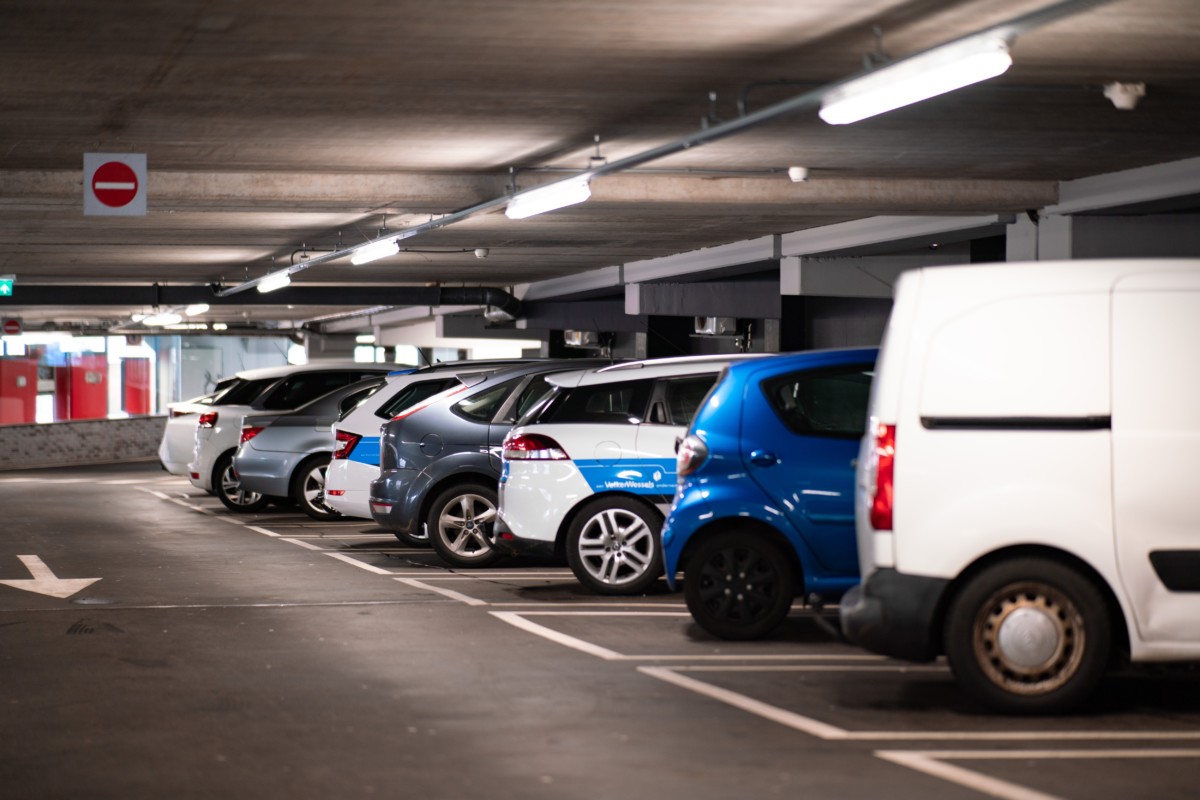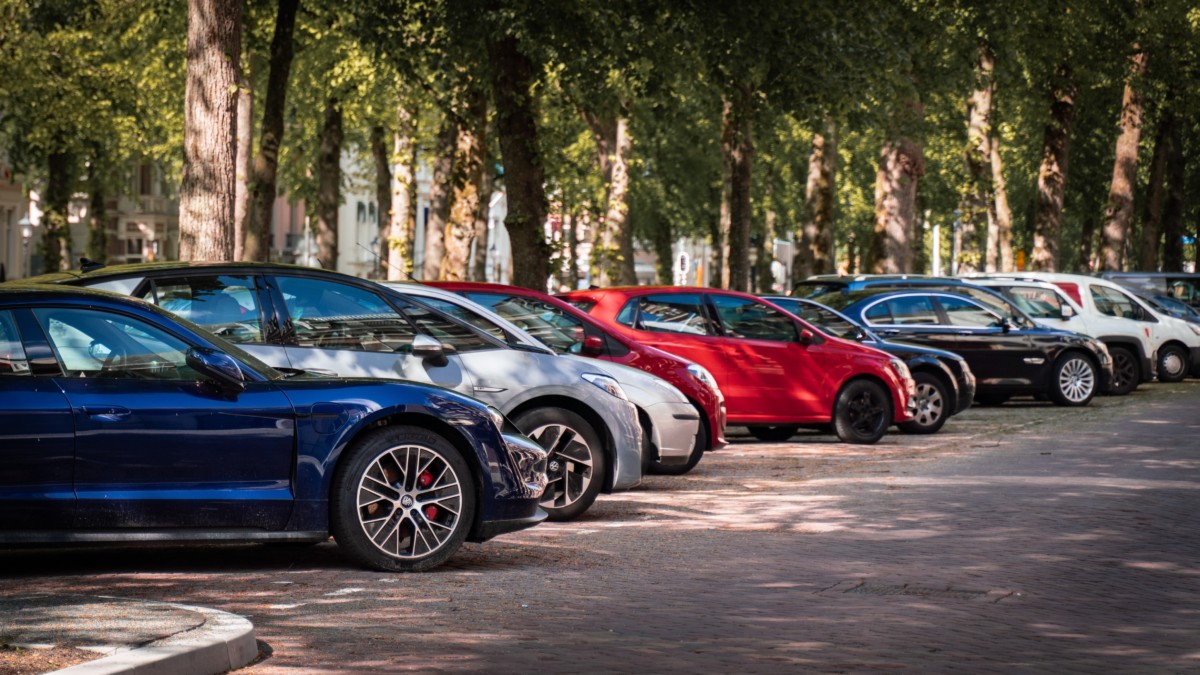
One of the most important apartment amenities you’ll have to consider when you move to a new building is parking. Depending on where you move, you may have the option to choose between a few types of parking.
Whether you’re moving to a city-center apartment in Seattle, WA, or a suburban apartment in Phoenix, AZ, this Redfin article will show you your apartment parking options so you can choose the one that’s best for you.

1. Tandem parking
Depending on your living situation, tandem parking can work well. And it’s a great space-saving option for condos and cramped apartment buildings. With tandem parking, you share an extra-long parking spot with a roommate or whoever you live with. It works best for people who have regular schedules and don’t use their cars much.
However, tandem parking issues can be common. For example, if you or your roommate’s schedule changes, you may end up blocking your roommate’s car or vice versa.
To help tandem parking go smoothly, here are a few strategies you can implement,
- First, make sure you know each other’s schedules, like when you and your roommate need to leave your apartment every day and when you’ll be home.
- Then agree on how you’ll handle schedule changes before any arise.
- Last, make an emergency plan or what you’ll do if you must leave and your roommate isn’t home. Consider making extra car keys in case one of you is not available to move your car. There may still be some hiccups along the way, but there are ways to make it as little of a headache as possible.
2. Street parking
Probably the most common type of apartment parking is street parking. This is especially common in crowded, expensive cities where landlords try to keep rent costs down.
There are a lot of reasons to love street parking, however. First, it’s often free or less expensive than your apartment’s parking lot. Many streets are untimed, meaning you shouldn’t have to move your car that often. However, examine the parking rules and signs, as some streets prohibit parking during certain hours or days when there is street cleaning.
If you live in a more residential neighborhood, there are likely plenty of parallel parking options. However, the nearest available street parking may be a bit of a walk from your apartment. Additionally, there are also increased security risks, such as unexpected damage to your vehicle and possible break-ins. You might have to move your car every few hours or follow other parking rules. Lastly, depending on where you live, parking enforcement may be strict, and you may be ticketed or towed if you don’t abide by the laws.
3. Covered parking
Covered parking is a must if you live in a wet or snowy climate. It’s also popular in hot cities since the cover protects cars from problems like discoloration and peeling paint. With covered parking, your car will be protected from the elements in a private lot or garage on the grounds of the apartment. Or, if you live in a big city, you can find covered parking in private parking lots owned by other businesses.
Another benefit of covered parking is that it’s often more secure than uncovered parking. Many covered parking structures require keyless entry or another security measure to prevent anyone else from accessing or damaging your vehicle.
The major downside to covered parking is that it usually comes at a cost, depending on where you live and the structure you park in. For example, if you live in an apartment in Atlanta, GA, and your parking is covered by a simple metal roof, you will likely pay much less than if you live in a NYC apartment, and park in a secured garage.

4. Uncovered parking
The less expensive alternative to covered parking is uncovered parking, which is usually offered in a lot owned by your apartment complex.
While it doesn’t protect your car from snow or heat, uncovered parking is often closer to your apartment compared to street parking. However, because it’s owned by your apartment building, uncovered parking typically comes at a higher cost than street parking.
5. Motorcycle parking
For renters who prefer two wheels over four, many apartments offer smaller parking spaces for motorcycles, scooters, or other smaller vehicles. These spots are usually smaller and more efficient than standard car parking spots. They’re often strategically located near entrances or in well-lit, secure sections of the parking facility for easy access and added security. Some complexes may even provide covered or enclosed parking options to protect bikes from the elements.
6. Assigned parking
Also called “reserved parking,” assigned parking is exactly what it sounds like. Once you sign your lease, you’ll have a parking spot (or multiple) assigned to you. Usually, spaces have numbers or letters, so you can tell which spot is yours.
One major advantage of assigned parking is that you know you should always have a place to park, usually located in a more secure spot, like a garage or a parking lot controlled by your apartment owners. And, your parking space is likely to be closer to your apartment unit or located in a secured access garage.
However, there are some downsides to assigned parking. Many landlords will charge extra for an assigned spot versus an unassigned spot. This may not be the case if each resident is assigned a spot. There’s always a chance you’ll come home to find a random car parked in your spot. In that case, you’ll probably have to wait for your landlord to call the person who took your spot, wait for the car’s owner to return, or for a tow truck to show up. Your building may have parking enforcement that can handle the situation for you.
7. Unassigned parking
Usually offered as an alternative option to assigned spaces, unassigned parking is when your apartment complex has a private parking lot for residents, and you can park anywhere in that lot. Unassigned parking can be covered, uncovered, or in a secured access garage.
Unassigned parking can be a great option if your building has enough parking spaces for all of its residents. Unlike assigned parking, no one can “steal” your space. And, you can park anywhere. Plus, with being in a private lot, unassigned parking is usually pretty safe.
There are some downsides to unassigned parking, though. Depending on the parking rules in your building, you may find that visitors are using the extra spots as guest parking. Then you may have to park in a less desirable space or have trouble finding an empty spot.
8. Monthly parking garages
If your apartment complex doesn’t offer parking, you can always check out monthly parking garages nearby. Garages usually offer security features that don’t come with uncovered and street parking, like gated entry and security cameras. They may also offer you a discount if you buy a monthly parking pass.
The downside to monthly parking garages is that they’re often pricey, and there can be rules about how long and during which hours your vehicle can be in the garage.
Apartment Parking FAQs
How much does apartment parking cost?
The cost of apartment parking varies a lot based on your location and available parking options. In general, you’ll end up paying more for parking where property values are higher and when you’re closer to the city center. You’ll pay less for parking, maybe even $0, if you live in an area that isn’t very densely populated or in the suburbs.
In large urban areas, you’re likely to pay $150-$500 per month or more for apartment parking. Suburban areas often charge between $0 and $75 per month per car. Some apartments may not charge much, or anything at all, if the parking space is included in your rent. Again, keep in mind that certain types of parking cost more than others.
How many parking spaces does each unit get?
Depending on where you live, each unit may receive only one assigned parking space. Or you may get the same number of parking spaces as you have bedrooms or tenants. So, if you have a three-bedroom apartment, you may receive three assigned parking spots. You may only get one parking spot in metropolitan areas, no matter how many people live in your apartment or how many bedrooms your apartment has.
If your apartment building is supposed to assign you a parking space, but they don’t currently have any room, you can usually get on a waitlist for when a spot does open up. Similarly, if you want more parking spaces than your unit comes with, you can see about renting another spot in the lot or being added to a waitlist. And, your property manager can probably refer you to somewhere nearby to park in the meantime.
What if I don’t have a car?
Renters without cars or other vehicles should read their leases carefully before signing. Some apartments include the cost of parking in the rent, so you might find yourself paying extra for nothing.
Other apartment parking policies to consider
Besides just the types of parking in apartments, you’ll also want to check in with your new landlord about some other policies regarding parking.
Damages to your car
With people constantly rushing from place to place and driving in and out of increasingly tight parking spaces, damage to your car is an unfortunate possibility that comes with apartment parking. Your building’s policies on damage to your vehicle will be different based on security features they do or don’t offer, such as security cameras.
As with any policy, read your lease thoroughly and ask your landlord any questions about car damage policies.
Guest parking policies
Especially in cramped cities, chances are you’ll want to make sure you have enough guest parking for friends or family to park when they visit. Ask your property manager if there are any guest parking spaces in the parking garage or lot. Some lots may have a separate area for visitor parking that doesn’t interfere with the tenant’s spaces.
Or, see if your landlord has suggestions for other visitor parking options that are open to the public if there are a limited number of spaces on the property. Remember to follow any rules regarding time limits and entrance/exit privileges for your guest parking.
Your assigned parking space is taken
It’s unfortunately common for people with assigned parking to find their spot taken by another random vehicle. Read through your lease or rental agreement to see how your landlord handles this and how they can help you if this happens. Usually, they’ll be able to help you find another temporary parking spot, in addition to tracking down the parking offender if they’re another resident in your building.
In many cases, residents will have visible parking permits in their cars, or guests will have a different permit showing their parking spot number or another identifier. This can make resolving the parking situation that much easier.
Restrictions on parking
Various parking restrictions are common in apartments. For example, some garages may only have compact spaces, only allow back-in parking, special spots for energy-efficient vehicles, or time limits on how long your vehicle can be in the building. Whether it’s a restriction on the vehicle size or how long it can be there, make sure to read your lease for any other parking restrictions at your new apartment complex. Parking fines can get pricey fast, so you’ll want to ensure you aren’t breaking the rules regularly.
The post The 8 Most Common Apartment Parking Options appeared first on Redfin | Real Estate Tips for Home Buying, Selling & More.
from Redfin | Real Estate Tips for Home Buying, Selling & More https://ift.tt/L2aT06m



No comments:
Post a Comment